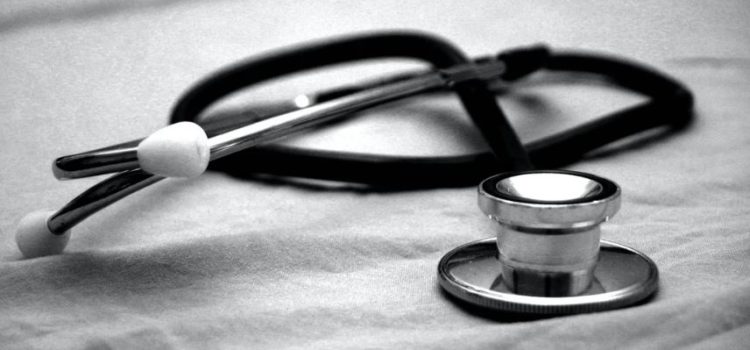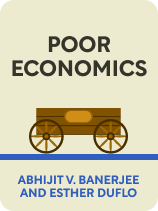

This article is an excerpt from the Shortform book guide to "Poor Economics" by Abhijit V. Banerjee and Esther Duflo. Shortform has the world's best summaries and analyses of books you should be reading.
Like this article? Sign up for a free trial here .
Do poor countries have access to healthcare? What obstacles do the poor face in accessing healthcare?
Many affordable and effective healthcare resources are available to the poor, yet they don’t use them as much as they should. According to Duflo and Banerjee, the authors of Poor Economics, there are four factors affecting the poor’s approach to their healthcare.
Here’s a look at poverty and healthcare access.
The Poor Aren’t Served Well
Trained government healthcare professionals are frequently absent from clinics close to the homes of the poor, assert Duflo and Banerjee. Even when they are present, they give the poor little attention. As a result, the poor often abandon the effective resources available at regulated clinics and seek care from independent providers. Many of these providers are unregulated or have no training. As a result, they often cause more harm than good by, for instance, reusing unsterile needles and spreading blood-borne diseases or by overprescribing antibiotics and increasing antibiotic resistance. Nevertheless, since they’re generally present to offer services, the poor continue to seek out the care of these independent providers, despite the harm they can do.
(Shortform note: Research on poverty and healthcare finds that that healthcare worker absenteeism in low- and middle-income countries ranges between 17% and 48%. Among all types of healthcare providers (private and public), absenteeism was accepted as the norm. For this reason, the poor often must take matters into their own hands and seek out whatever care they can get.)
The Poor Are Uneducated About Health
According to Duflo and Banerjee, most of the world’s poorest people aren’t educated—they haven’t had high school biology and in many cases, they’re illiterate. Further, accurate, up-to-date information about healthcare isn’t widely available in many places. For these reasons, the poor often end up making uninformed decisions about their health that lead to bad outcomes.
Because they’re uninformed about effective treatments and because, as mentioned above, their health care providers are also often uninformed, the poor tend to rely on their gut, favoring treatments that feel like they should be effective, assert Duflo and Banerjee. This often means they prefer more dramatic treatments over simpler treatments, even if those simpler treatments are actually more effective and less dangerous.
For example, when seeking care for diarrhea, the poor often ask for antibiotic injections instead of a simpler oral rehydration solution (a drink consisting mainly of water, sugar, and salt), even though antibiotic injections are often less-effective and can lead to problems mentioned above, like drug resistance or the spread of blood-borne diseases. If they understood their health needs better, the poor would be less apt to make such a mistake, claim Duflo and Banerjee.
(Shortform note: Other experts have likewise noted that many in the world’s poorest countries have low health literacy: They have difficulty finding, reading, understanding, and using information about healthcare. Experts note that increasing health literacy among the poor isn’t just a matter of educating individuals in basic reading, writing, and math skills—it’s also a matter of educating community health workers, researchers, and governments on the most effective ways to communicate with the people they serve.)
The Poor Are Extremely Sensitive to Price
Even minimal costs can discourage the poor from using effective preventive tools such as bed nets, contend Duflo and Banerjee. For example, experiments have shown that the poor are far less likely to get bed nets if they’re not free—even if they’re available at prices well within their means. Often, these cheap technologies are the only things preventing the spread of disease, so it’s a problem that the poor are unlikely to spend money on them.
(Shortform note: Duflo and Banerjee’s Poverty Action Lab conducted 10 evaluations in four countries to determine how changes in price affect the poor’s use of preventive technologies, including the bed nets they mention in the book. They found that usage fell dramatically when products once offered for free were offered at a small price. For example, in one case, free deworming treatment was discontinued and offered instead for $0.30. This fee was well within the means of the poor to whom it was offered, yet usage of the treatment fell from 75% to 19%. The results were similar in all cases.)
The Poor Don’t Take Advantage of Preventive Measures
Duflo and Banerjee believe this isn’t a phenomenon that’s unique to the poor: Humans often don’t take small preventive measures today that can avert larger problems in the future. For this reason, the poor often don’t take advantage of preventive measures like vaccines that can save them from contracting diseases down the road.
(Shortform note: Researchers find that the poor take advantage of preventive measures more if they’re given a small incentive, such as a little bit of food or a very small sum of money. They suggest that such small incentives work to overcome procrastination in the poor by giving them a reason now to act on something they know they should do anyway.)
According to the authors, these dynamics account for why the poor fail to take advantage of the resources that already exist to maintain and improve their health—thus, if policymakers hope to take steps to improve the health of the poor, they need to factor them into their efforts.

———End of Preview———
Like what you just read? Read the rest of the world's best book summary and analysis of Abhijit V. Banerjee and Esther Duflo's "Poor Economics" at Shortform .
Here's what you'll find in our full Poor Economics summary :
- A look at how some people live on less than 99 cents per day
- An analysis of how the poor live and how policy interventions affect their lives
- The four key insights Duflo and Banerjee offer about poverty






